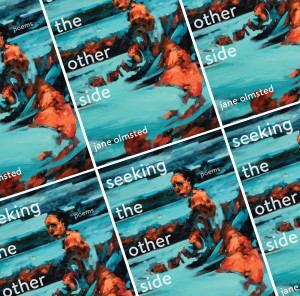Jane Olmsted reads poem after poem, standing before a full room in the Kentucky building. Olmsted reads her own words. Words of life, love and loss.
She is reading from Seeking the Other Side, her newly published book of poetry. She was invited to do so for the Kentucky Live! artistic appreciation series.
“I wanted to pay attention to even little things and give them their due because I think there’s too much in life of rushing around,” Olmsted said.
The event began with an introduction from former Kentucky Poet Laureate Sena Jeter Naslund. Naslund, a friend and former instructor of Olmsted, praised Olmsted’s work.
“I admire these poems of Jane so much,” Naslund said. “I love them. I wouldn’t say they’re easy poems. Sometimes what is original isn’t easy. “
Following Naslund’s remarks, Olmsted took the stage, exposing the audience to a sample of her work contained within the pages of Seeking the Other Side.
I’m in no hurry and am learning to listen underneath
when someone says
it doesn’t matter and all is well.
– “Whisper” by Jane Olmsted
For Olmsted, her poetry had a simple goal.
“Just slow down, give space to what’s really meaningful because if we lose it, we’re not going to be thinking about what that event was,” she said. “We’re going to be thinking about those little things.”
Remembering the little things after loss is not a foreign concept to Olmsted. It is a challenge she continues to face — six years after the 2009 murder of her 20-year-old son Casey.
The night we read the report, I dreamt they laid our boy on a table and left me alone to study his face—the returning pink that didn’t belong, the tear that escaped his eye and rolled down his cheek.
– “Cyan” by Jane Olmsted
“It was a totally, paranoid, irrational act of someone who had been drinking too much, had too many guns around, and didn’t ask questions,” she said.
Olmsted earned her Ph.D. in English from the University of Minnesota in 1996. Now she is WKU’s diversity and community studies department head. She’s been writing poetry for most of her life, but Casey’s death provoked a resurgence.
Today we are putting the pieces together. Yesterday, we had the news. Tomorrow, and tomorrow, we’ll have the ever-crashing waves. But today we learn about calibers and hydrostatic shock.
– “Hydrostatic Shock” by Jane Olmsted
Her book is split into three distinct sections of poetry. The first two sections, Ways of Touching and Tree Forms, highlight a long span of life and a wide array of emotion. The last section, The Casey Poems, focuses exclusively on Casey, his life, his death and the grieving he left behind.
“The writing of poetry helps me think through something very difficult because in poetry you have to zero in to what the real thing itself is, the core of it,” Olmsted said.
As she reads, the audience experiences every word, line and stanza of her poetry. Her voice, not without the occasional quiver or shake, carries through the room.
It seems the life I’ve called my own is but an echo of someone else, someone who can only be heard—or found—if she lets go of that life
sloughing off the skin and baring the rawness, pulling hand over hand and gathering the lines of this deep-shadowed life.
– “Ghazal by Thread” by Jame Olmsted
For Olmsted, writing was a road to recovery.
“I couldn’t continue to walk around this place in utter confusion and crying all the time, very sensitive to everything, wanting to escape, wanting to go numb in very unhealthy ways.” she said. “You know, after a certain point you can’t keep doing that. You’re surrendering yourself to the same death.”
Her poetry in Seeking the Other Side grapples with other topics as well — crossing the line between life and death, between the self and the other and understanding the world around her. For Olmsted, an important characteristic of poetry is that it invites people in and leads to better understanding.
And so it was understanding she attempted to share with the audience as she read through portions of Seeking the Other Side.
“I don’t want it to be emotionally devastating, or I don’t want people to be depressed,” Olmsted said.“I want people to be touched, but also see the collection as moving towards healing and towards hope and towards new life.”

